An Earthquake Primer
The third next most disastrous earthquake in
Japanese history (behind Tokyo 1923 and Tokaido 2009) was the
Great Hanshin Earthquake, which occurred at 6:46 am on January 17,
1995 killing over 6000 people, mainly in Kobe and nearby cities.
Damage from earthquakes comes from at least
three sources.
1. Ground Motion. Movement of the ground causes
collapse of building and bridges, breaking of power lines and
pipelines as well as other structural damage. Fires caused by
ruptured gas lines are also a major hazard, especially since
waterlines are often broken and fire fighting becomes difficult.
2. Ground Failure. Earthquakes often cause
landslides. Also, liquefation may occur as soil particles are
jarred and water seeps in. Buildings topple or sink on such
liquefied soil.
3. Tsunamis. These waves, sometimes incorrectly
called tidal waves, occur when the epicenter is undersea or very
near the ocean and travel as a shock wave from the epicenter.
Tsunamis can travel at speeds up to 1000 km/h (620 mph) and as
they reach shore, they can mount up forming waves 15 m (49 ft)
tall and cause severe damage to coastal regions. (The Kobe quake
generated no tsunamis.)
Photos below depict some of these types of
damage. They were taken either about a month after the quake or
about two months afterward, when I briefly went as a volunteer
to help out with the Baptist relief effort.
Ground Motion and Structural Collapse
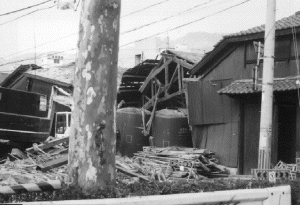
Wood frame buildings were often reduced to rubble
in the area of greatest ground motion.

Many steel frame, or reinforced concrete buildings
fared no better. This is Kobe city hall building with the entire
5th (?) floor collapsed.
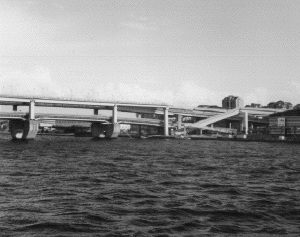
The collapse of the tram rail line to man-made
Rokko Island (where our son was stranded for 2 1/2 days) was
just one example of the way in which earthquakes paralyze
traffic, confounding the problems of rescue, fire fighting, and
other forms of relief.
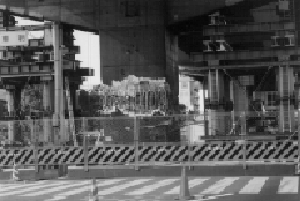
As you probably saw on TV, a portion of the
Hanshin Expressway also collapsed. This segment remained
standing, but, as you can see, was probably very near collapse.
Ground Failure and Liquefaction
Liquefaction occurs with excessive shaking of soil
that has a high water content, turning the soil into a liquid
state.

Here you can see mud covering the cobblestone
walkway on Rokko Island. When my son and I returned to Rokko
Island, we had to fight our way through many mud patches like
this.
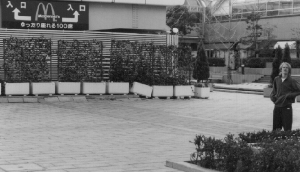
With liquefaction, the soil sinks. The row of
planters in the distance was straight across before the
earthquake. In the center of the island (where this photo was
taken), the soil had only sunk 6" to one foot. However, nearer
the outer edges, it had clearly sunk 3 to 4 feet. Where the soil
was supported (as around this building, which probably has a
pylon-foundation), no sinking was seen. (Yes, that's Wesley, our
then 15 year-old son).
Fire
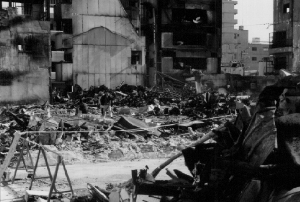
A tremendous percentage of the deaths occurred due
to the fires that followed the earthquake.
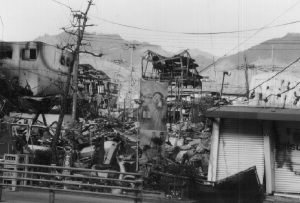
Our former language teacher lost her mother in a
neighborhood much like this one.
Volunteers!
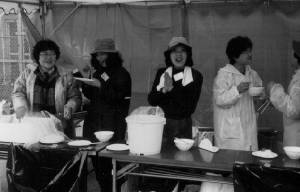
A group of Baptist volunteers serving a hot meals
to those living in temporary shelters just after the earthquake.